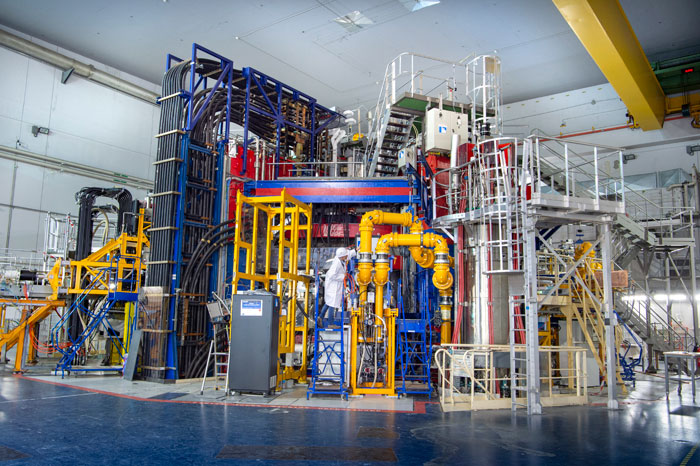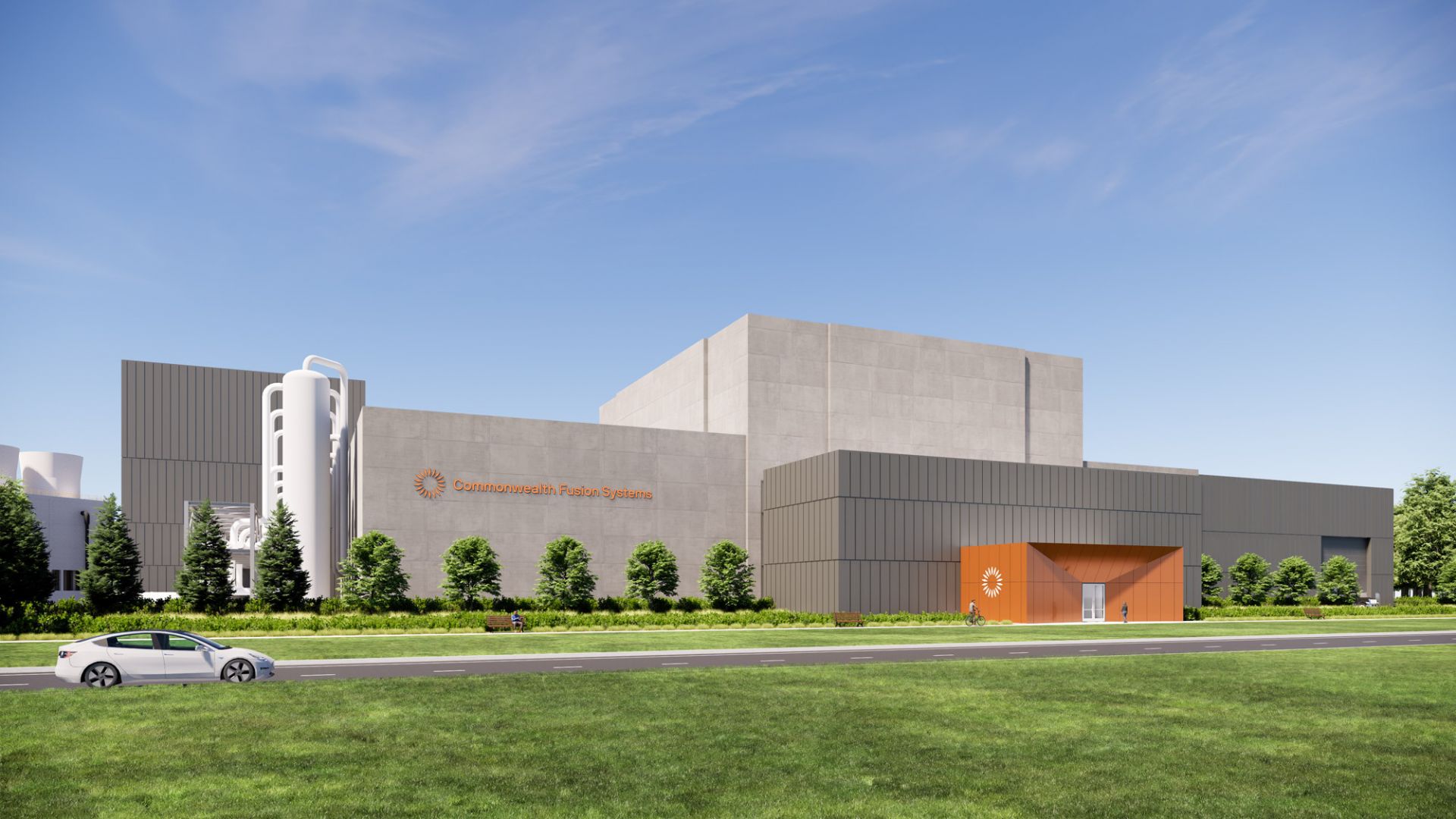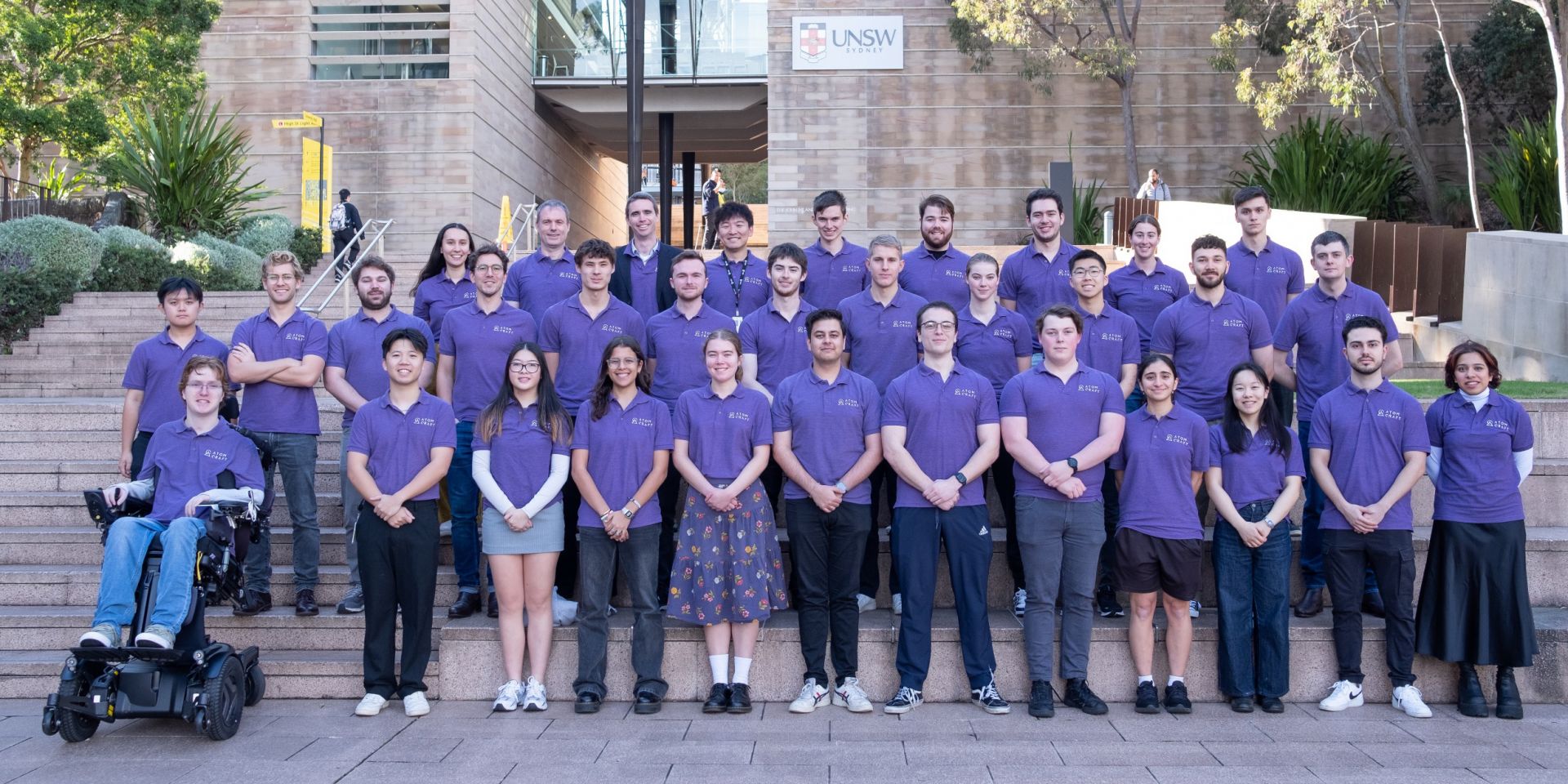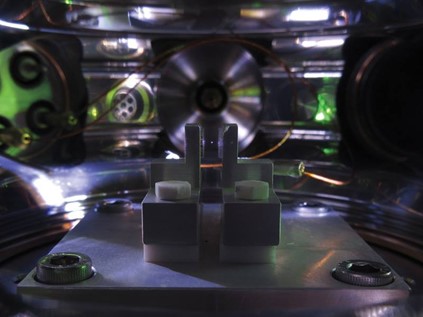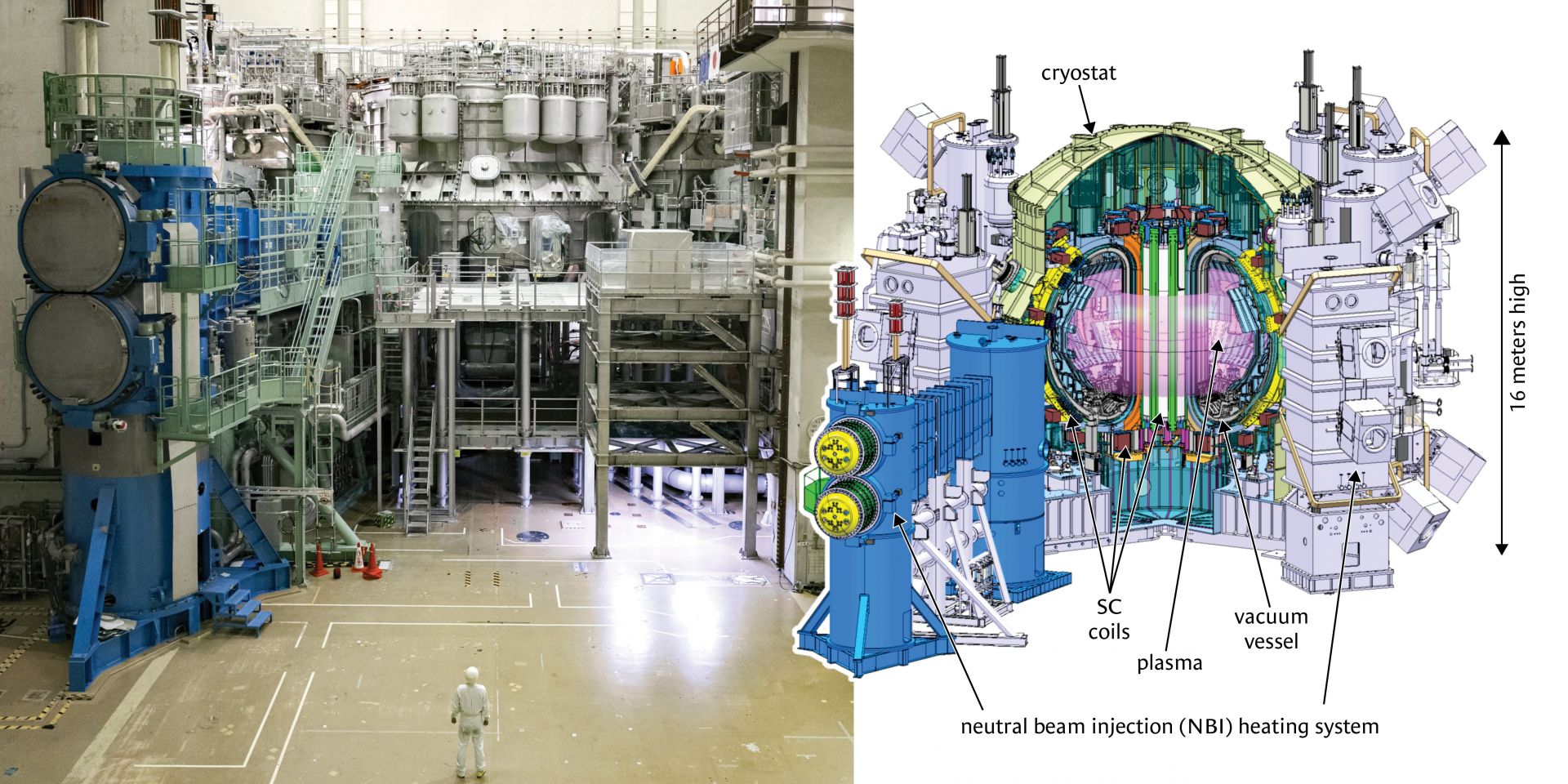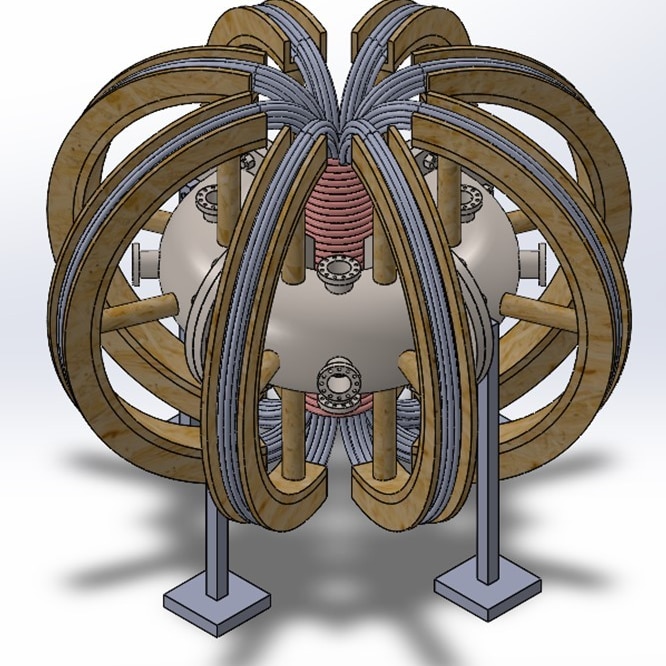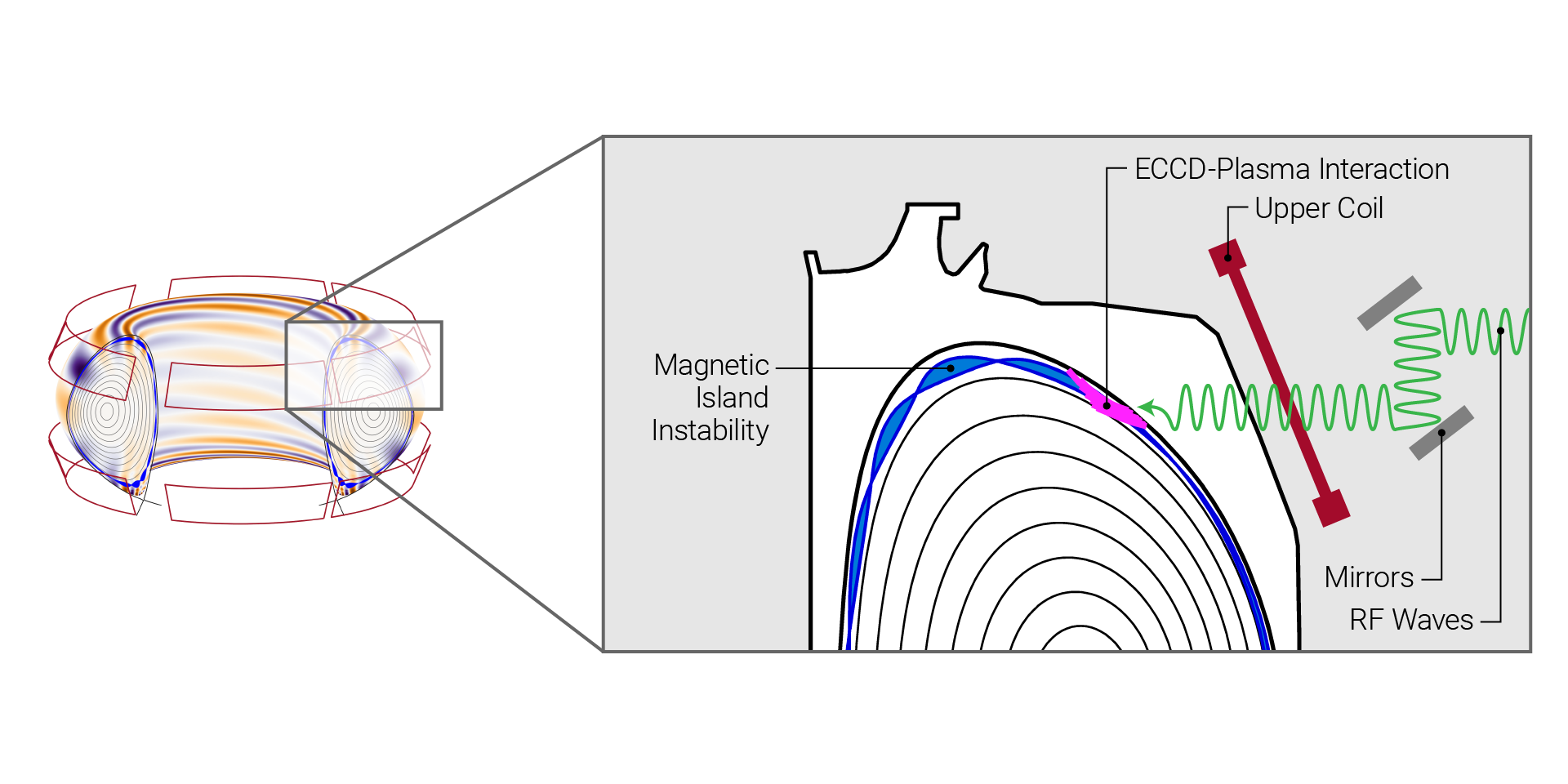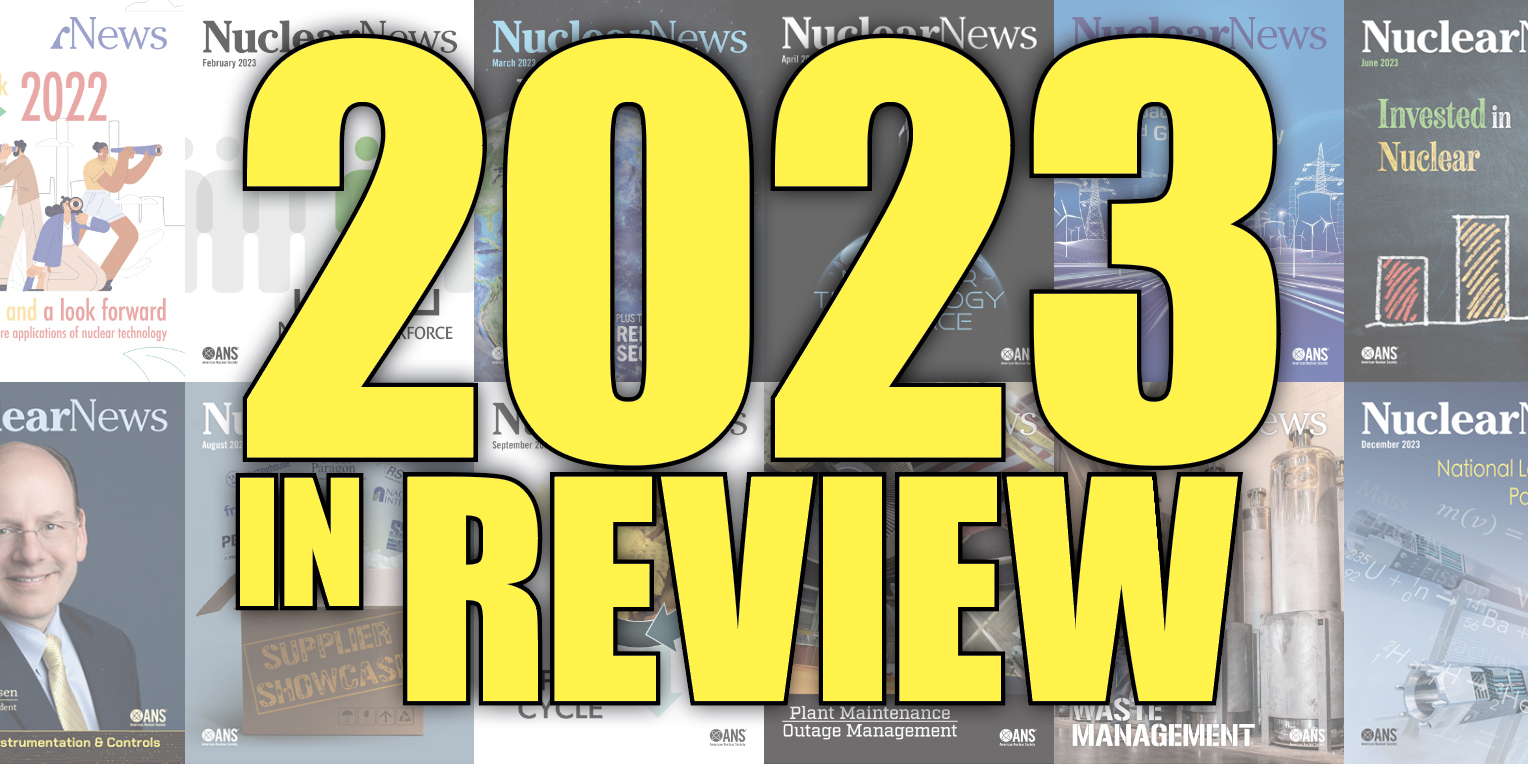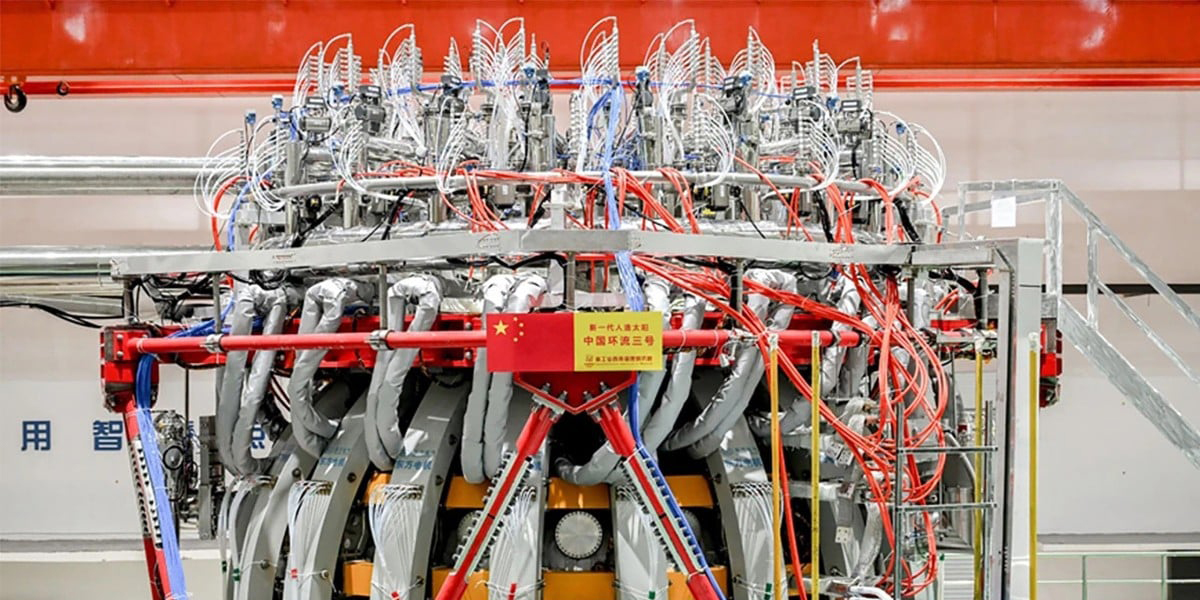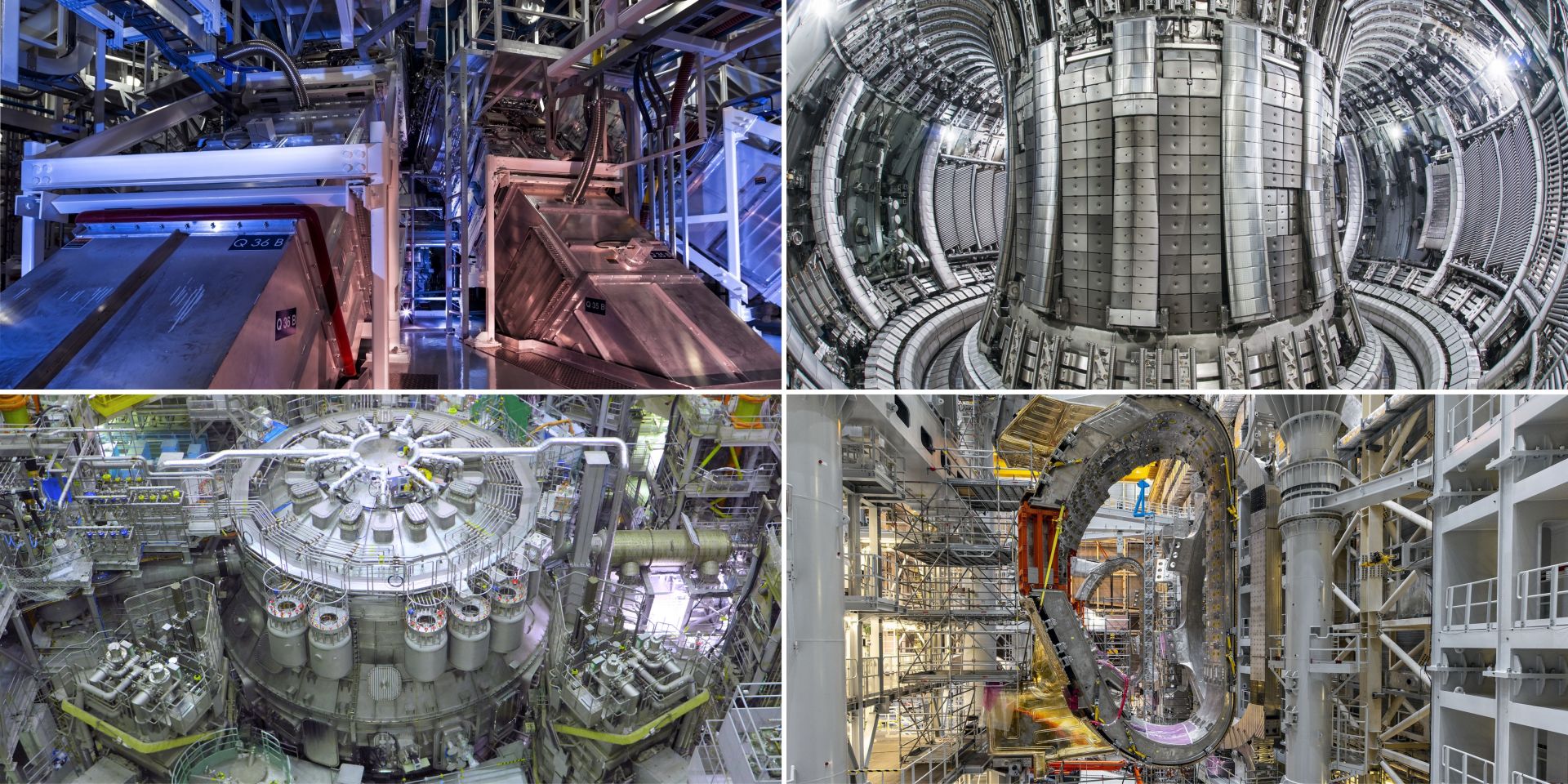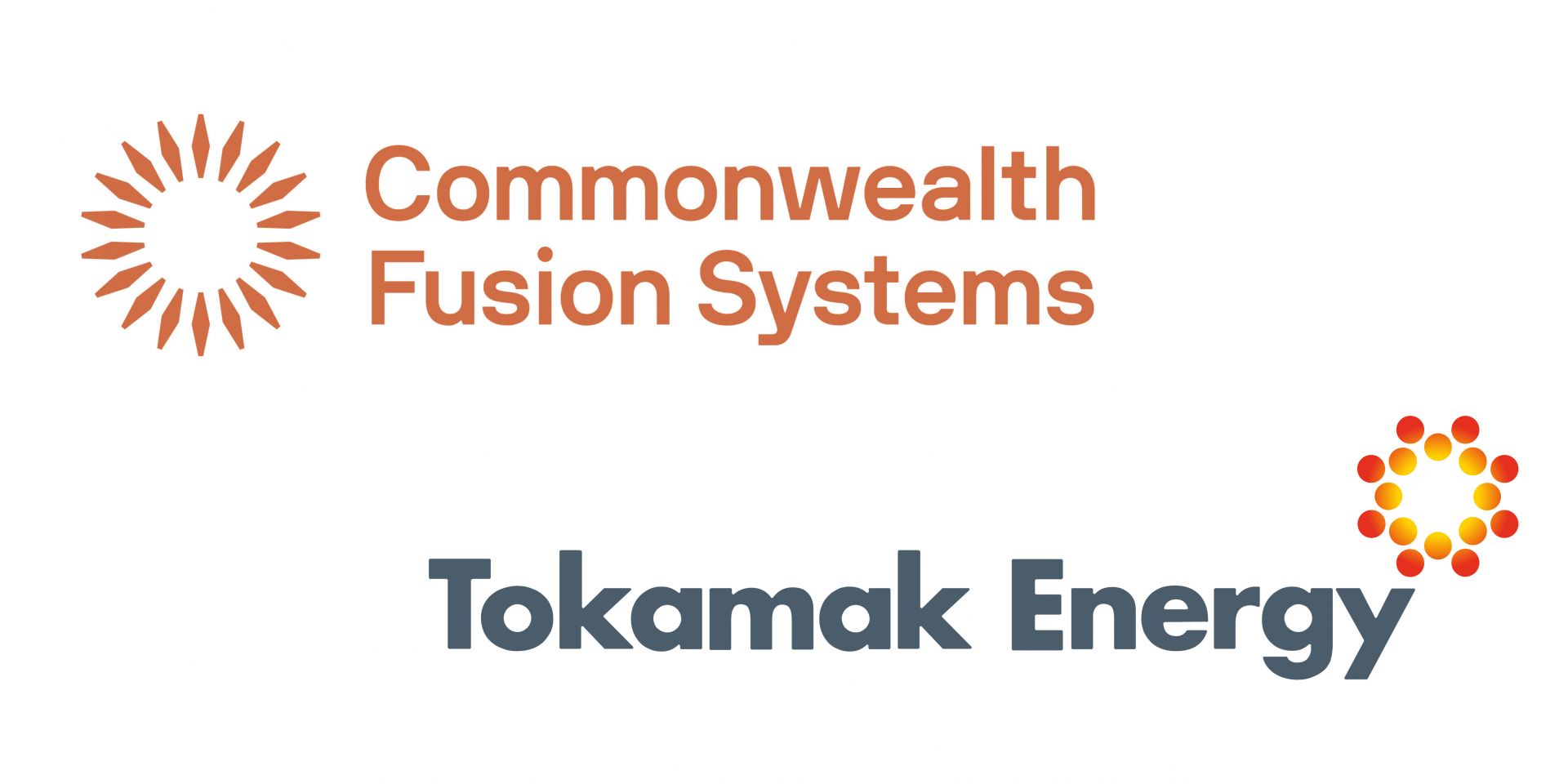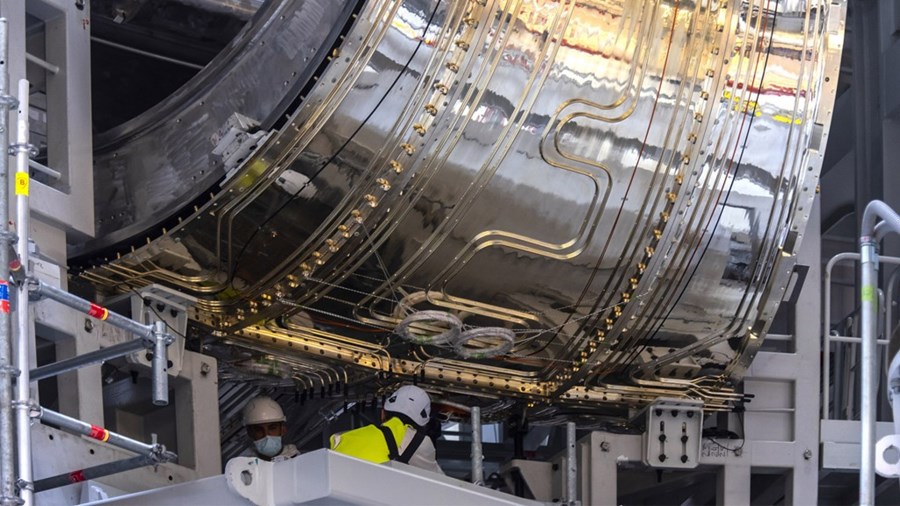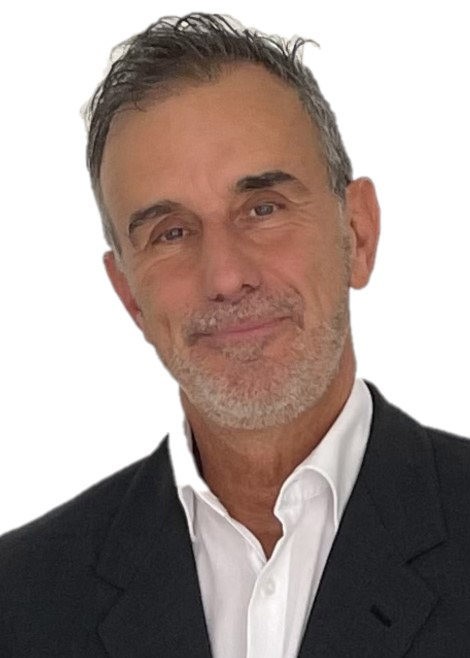The WEST tokamak. (Photo: L. Godart/CEA)
The French magnetic confinement fusion tokamak known as WEST maintained a plasma in February for more than 22 minutes—1,337 seconds, to be precise—and “smashed” the previous record plasma duration for a tokamak with a 25 percent improvement, according to the CEA, which operates the machine. The previous 1,006-second record was set by China’s EAST just a few weeks prior. Records are made to be broken, but this rapid progress illustrates a collective, global increase in plasma confinement expertise, aided by tungsten in key components.
Korea’s KSTAR tokamak. (Photo: Korea Institute of Fusion Energy)
A rendering of Commonwealth Fusion Systems planned ARC power plant. (Image: CFS)
Commonwealth Fusion Systems (CFS) has announced that it plans to build a fusion power plant, named ARC, at the James River Industrial Park in Chesterfield County, Va.—and that it expects to be the first company to make fusion power available at grid scale.
Chapman (left) and Methven at the West Burton power station. (Photo: UKIFS)
Leadership of the United Kingdom’s STEP (Spherical Tokamak for Energy Production) fusion program has transitioned to U.K. Industrial Fusion Solutions Ltd. (UKIFS), a wholly owned subsidiary of the U.K. Atomic Energy Authority (UKAEA). UKIFS was established in February 2023 to lead a public-private partnership that will design, build, and operate the STEP prototype fusion energy plant in Nottinghamshire in England’s East Midlands region.
The cross-disciplinary AtomCraft team. (Photo: University of New South Wales)
Commercial nuclear power is illegal in Australia, and it has been since the 1990s. This past June, however, the country’s main opposition party announced plans to build seven commercial nuclear reactors in the 2030s and 2040s on sites presently occupied by aging coal-fired plants—should the party’s Liberal–National Coalition win power in federal elections next year. This statement has reignited a public debate regarding the potential role of nuclear energy in Australia.
An optically trapped microparticle in high vacuum is visible as a white dot levitated between two lenses, which are used to focus and collect invisible infrared laser light used to trap the particle. (Photo: DOE/Yale Wright Lab)
Start talking about dust in a vacuum, and some people will think of household chores. But dust has featured in recent nuclear science and engineering headlines in curious ways: ITER is deploying oversized dust covers inspired by space satellites in the south of France, while at Yale University, researchers have watched every move of a dust-sized particle levitating in a laser beam for telltale twitches that indicate radioactive decay.
Fig. 1. A photograph (left) and schematic figure (right) of JT-60SA.
(Source: Naka Institute)
JT-60SA (Japan Torus-60 Super Advanced) is the world’s largest superconducting tokamak device. Its goal is the earlier realization of fusion energy (see Fig. 1). Fusion is the energy that powers the Sun, and just 1 gram of deuterium-tritium (D-T) fuel produces enormous energy—the equivalent of 8 tons of crude oil.
Last fall, the JT-60SA project announced an important milestone: the achievement of the tokamak’s first plasma. This article describes the objectives of the JT-60SA project, achievements in the operation campaign for the first plasma, and next steps.
Image: Kyle Palmer and Michael Livingston/PPPL Communications Department
The DIII-D Superfacility team. (Photo: General Atomics)
Researchers at the DIII-D National Fusion Facility, the National Energy Research Scientific Computing Center (NERSC) at Lawrence Berkeley National Laboratory (LBNL), and the Energy Sciences Network (ESnet) are teaming up to make the high-performance computing (HPC) powers of NERSC available to DIII-D researchers through ESnet—a high-speed data network. Their collaboration, described in a May 29 news release, in effect boosts the computing power behind DIII-D’s diagnostic tools to make more data from fusion experiments available to researchers at DIII-D in San Diego and to the global fusion research community.
The image on the left shows the tokamak and 3D magnetic perturbation generated by 3D coils, with the purple-blue hues representing lower amplitude perturbations and the red representing higher amplitude perturbations. The image on the right is a closer view showing the top half of the tokamak and plasma. The coils are used to generate the magnetic field perturbations that produce the islands (blue). Another coil can also be found on the bottom of the machine. The injection system for the ECCD microwaves is depicted on top (red). These can be used to adjust the width of the islands. (Image: Qiming Hu / PPPL)
The combination of two previously known methods for managing plasma conditions can result in enhanced control of plasma in a fusion reactor, according to a simulation performed by researchers at the Department of Energy’s Princeton Plasma Physics Laboratory.
The HL-2M tokamak reactor, developed by the CNNC’s Southwestern Institute of Physics. (Photo: CNNC)
The government of China has formed a new national industrial consortium focused on the development and advancement of nuclear fusion technology, news outlets have reported.
The cooling pipes that snake along the surface of the vacuum vessel thermal shield will be removed and replaced. Here, on a right-hand outboard panel, workers determine the impact of pipe removal on the surface of the component. (Photo: ITER Organization)
ITER’s machine assembly phase began about two and a half years ago. Now, staff are reversing some of that assembly work to make needed repairs. According to a news article published by the ITER Organization on January 9, ITER is “facing challenges common to every industrial venture involving first-of-a-kind components.” Over one year after problems were first detected and less than two months after they were made public in late November, tests and analysis are producing a clearer picture of necessary repairs to the tokamak’s thermal shield panels and vacuum vessel sectors.
“There is no scandal here,” said ITER director general Pietro Barabaschi. “Such things happen. I've seen many issues of the kind, and much worse.”
A total of about 23 kilometers (about 14 miles) of piping are welded to the surface of the thermal shield panels. The piping on a vacuum vessel thermal shield panel is clearly visible in this photo. (Photo: ITER Organization)
The ITER Organization is working on a new baseline schedule for the magnetic confinement fusion experiment launched in 1985 and now under construction in southern France. First plasma was scheduled for December 2025 and deuterium-tritium operations for 2035 under a schedule approved in November 2016 that will soon be shelved. In addition to impacts from COVID-19 delays and uncertainty resulting from Russia’s war in Ukraine, ITER leaders must now factor in repair time for “component challenges.”
The Spherical Tokamak for Energy Production, shown here in an artist's rendition, is a government-backed prototype fusion energy plant planned for operation in the U.K. in the early 2040s. (Image: UKAEA)
The U.K. Atomic Energy Authority (UKAEA) and Tokamak Energy announced on October 10 that they signed a framework agreement to collaborate on developing spherical tokamaks for power production. This news is a complement to last week’s announcement from the U.K. government that the West Burton A coal-fired power plant site in Nottinghamshire has been selected as the future home of STEP (Spherical Tokamak for Energy Production), the U.K.’s planned prototype fusion energy plant. The government is providing £220 million (about $250 million) of funding for the first phase of STEP, which will see the UKAEA produce a concept design by 2024.
